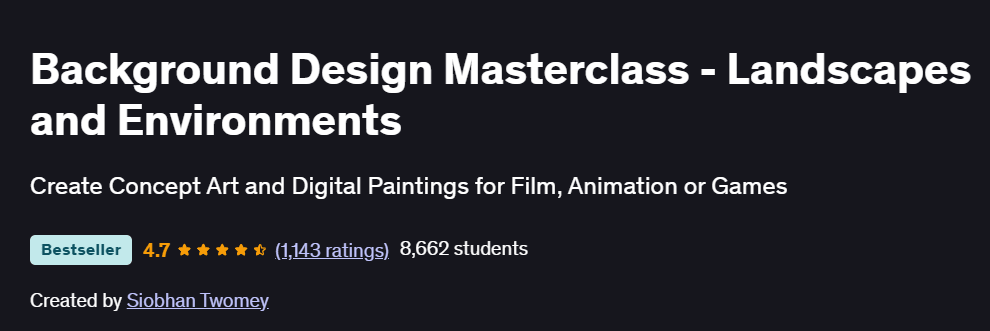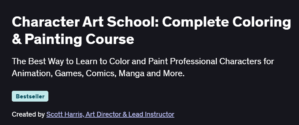What will you learn in Background Design Masterclass – Landscapes and Environments Course
Understand the principles of background design and concept art fundamentals
Use perspective, light, and shadow to create depth in environments
Build thumbnails and rough sketches for concept visualization
Paint stylized backgrounds using digital brushes and color theory
Program Overview
Module 1: Introduction to Background Design
⏳ 30 minutes
Topics: Role of background design in animation and games, concept art workflow overview
Hands-on: Set up canvas and review references for environment sketches
Module 2: Composition & Perspective
⏳ 1 hour
Topics: Rule of thirds, vanishing points, depth cues, dynamic framing
Hands-on: Create 2-point and 3-point perspective scenes using simple shapes
Module 3: Sketching & Thumbnails
⏳ 45 minutes
Topics: Thumbnail generation, visual exploration, layout techniques
Hands-on: Produce 3–5 thumbnails for a concept environment idea
Module 4: Color, Light & Mood
⏳ 1 hour
Topics: Color harmony, lighting direction, atmospheric perspective
Hands-on: Paint value studies and explore lighting scenarios using a limited palette
Module 5: Painting Stylized Backgrounds
⏳ 1 hour 15 minutes
Topics: Custom brushes, texture detailing, color refinement
Hands-on: Paint a fully rendered stylized background based on thumbnail
Module 6: Final Polish & Storytelling
⏳ 1 hour
Topics: Enhancing focal points, storytelling cues, finishing touches
Hands-on: Add storytelling elements to your final concept piece and export it for portfolio use
Get certificate
Job Outlook
Concept artists earn between $55,000 and $95,000 annually, depending on experience
Demand is growing in animation, gaming, and film industries for environment designers
Stylized and imaginative concept art is key for world-building in digital storytelling
Strong portfolio pieces from this course can aid in freelance, studio, or game art roles
Specification: Background Design Masterclass – Landscapes and Environments
|
FAQs
- No professional drawing background is required.
- Basic sketching or digital art experience helps but isn’t necessary.
- The course starts with fundamental concepts and techniques.
- Step-by-step exercises guide you through creating environments.
- Enthusiasm and practice are more important than prior expertise.
- Digital drawing tablet or a computer with graphic software.
- Software like Photoshop, Clip Studio Paint, or Procreate.
- Basic familiarity with layers, brushes, and digital painting tools.
- Optional: traditional pencil and paper for initial sketches.
- Reliable system performance ensures smooth workflow with large files.
- Yes, skills apply to 2D animation, concept art, and game environments.
- Focus on perspective, composition, and lighting techniques.
- You’ll learn to create immersive and realistic landscapes.
- Designed projects can be adapted for storytelling or interactive media.
- Portfolios built here can be showcased to potential clients or studios.
- Recreate real-world landscapes or reference images.
- Experiment with color palettes and lighting scenarios.
- Join online art challenges or community exercises.
- Maintain a sketchbook or digital portfolio of daily studies.
- Seek feedback from art communities to refine techniques.
- Roles include background artist, concept artist, and environment designer.
- Freelance opportunities exist in animation, comics, and game design.
- Building a strong portfolio can attract studios and clients.
- Skills can be applied to book illustrations, marketing visuals, and animations.
- Combining with 3D or animation software enhances versatility.





